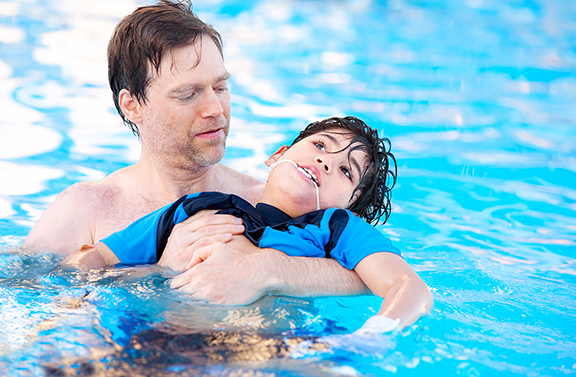
Inactivity’s effects are more and more apparent in our everyday lives. Obesity is on the rise as are conditions like diabetes.
Why is this happening?
Too many people think exercise is too much work. They excuse it away by saying that they don’t have a gym nearby or they don’t have time to do it. These people – in all likelihood – are perfectly capable of being active.
Unfortunately, many who DO want to be active, cannot because of a disability. These people know they should stay active – and even want to – but have trouble doing it. It just isn’t possible to go out a jog a mile when you’re in a wheelchair.
Times are changing.
People with disabilities (or who are differently abled) are finding more and more ways to participate in sports and activities. This is helping their physical health and it’s helping to break down barriers.
Sports are needed.
Playing sports at any level or at any age has a lot of benefits.
- It helps build physical health by exercising the muscles
- It helps to expend calories before they can turn into fat
- It helps teach life lessons including
- Discipline
- Teamwork
- Accepting loss
Just because someone is “differently abled” doesn’t mean they can’t benefit from these lessons too.
The benefits of being active in sports – whether able or disabled or adult or child. In fact, it’s important for children who are disabled benefit tremendously from being involved in sports because they gain a sense of belonging while at school and while around the able-bodied children.
Accommodations should be made.
Those with physical or mental disabilities don’t have the exact same capabilities as others and sometimes need special accommodations in order to be active in the world that is set up for the able-bodied. Making some modifications to activities so people with disabilities can participate isn’t difficult.
Here are a few common modifications for sports activities to make them accessible for those with disabilities:
- Modify bikes (including using tricycles) to allow hand cycling or tandem cycling.
- Adaptive golf cards can help those with disabilities play on the links.
- Sports paddles for canoeing and rowing for lower mobility problems.
- Swimming with a partner.
- Volleyball and basketball leagues specifically for people in wheelchairs.
- Lawn sports (horseshoes, bocce ball, etc.) often need no modification for disabled participants but can still meet social needs through teamwork and camaraderie.
Of course, consultation with individual physicians of those who have disabilities should take place before engaging in any of these activities.
Using service dogs.
Many people with disabilities use service animals. This can also help a person with a disability participate in sports (and similar activities). Federal law requires a business (including sports facilities) to allow service dogs on their property. As long as a dog is really a service dog and not just a favorite pet, this is fine.
Activity is important.
Disability or not, adult or child, activity is very important to physical and emotional health. What is really cool, is that swimming is a great activity for all – regardless of age or ability. Children who learn to swim at a young age, develop physical activity as a lifestyle early on. Instilling this early can help the habit to stick and for activity to continue into and throughout adulthood and make the able-bodied or one with disabilities a healthier and happier person.
Little Otter Swim School’s team members are passionate about teaching kids to swim and be safe as they enjoy the water. We’d love to share more of the benefits of learning to swim with you. Learn more about what makes Little Otter different.


Conversations